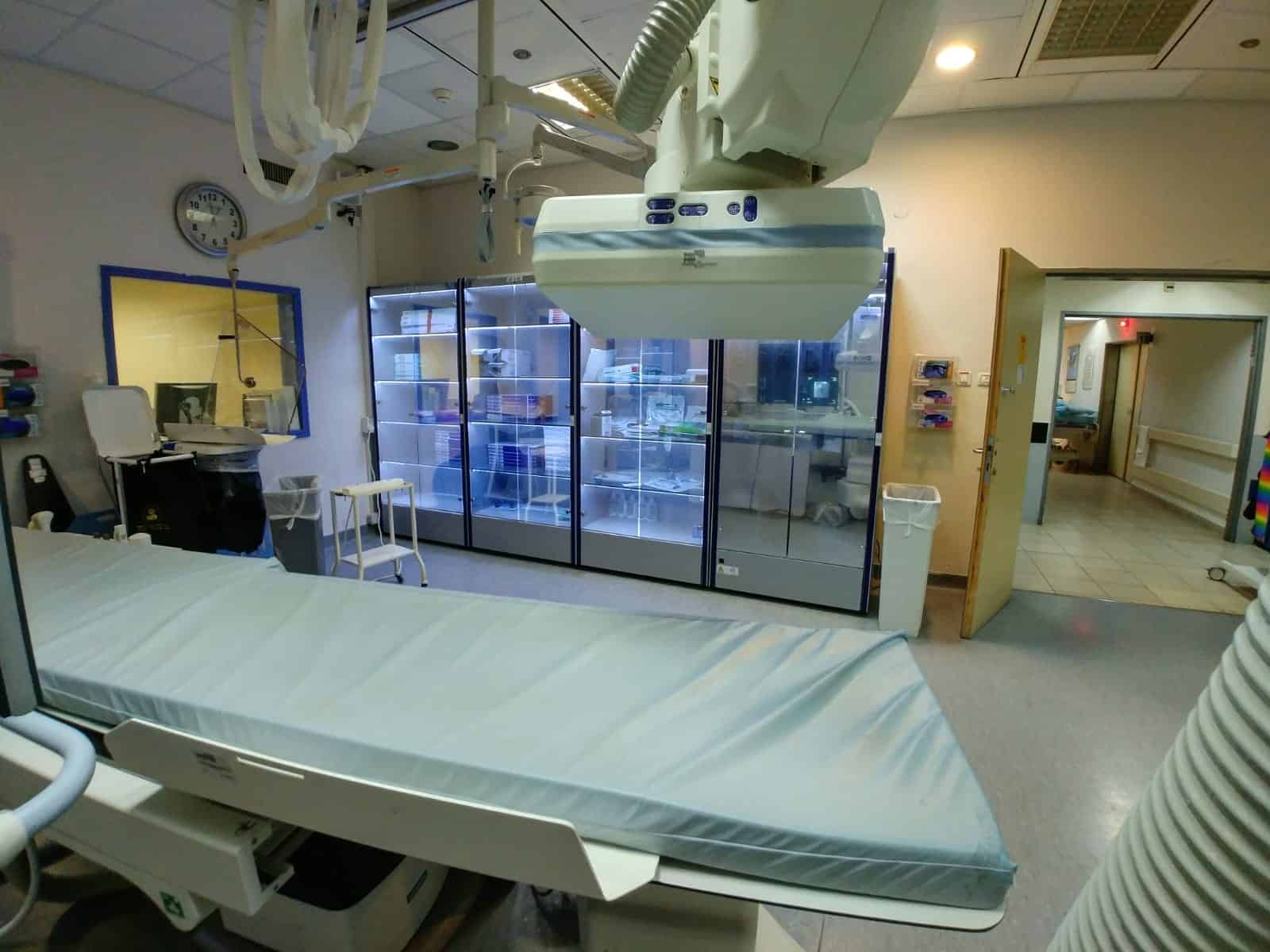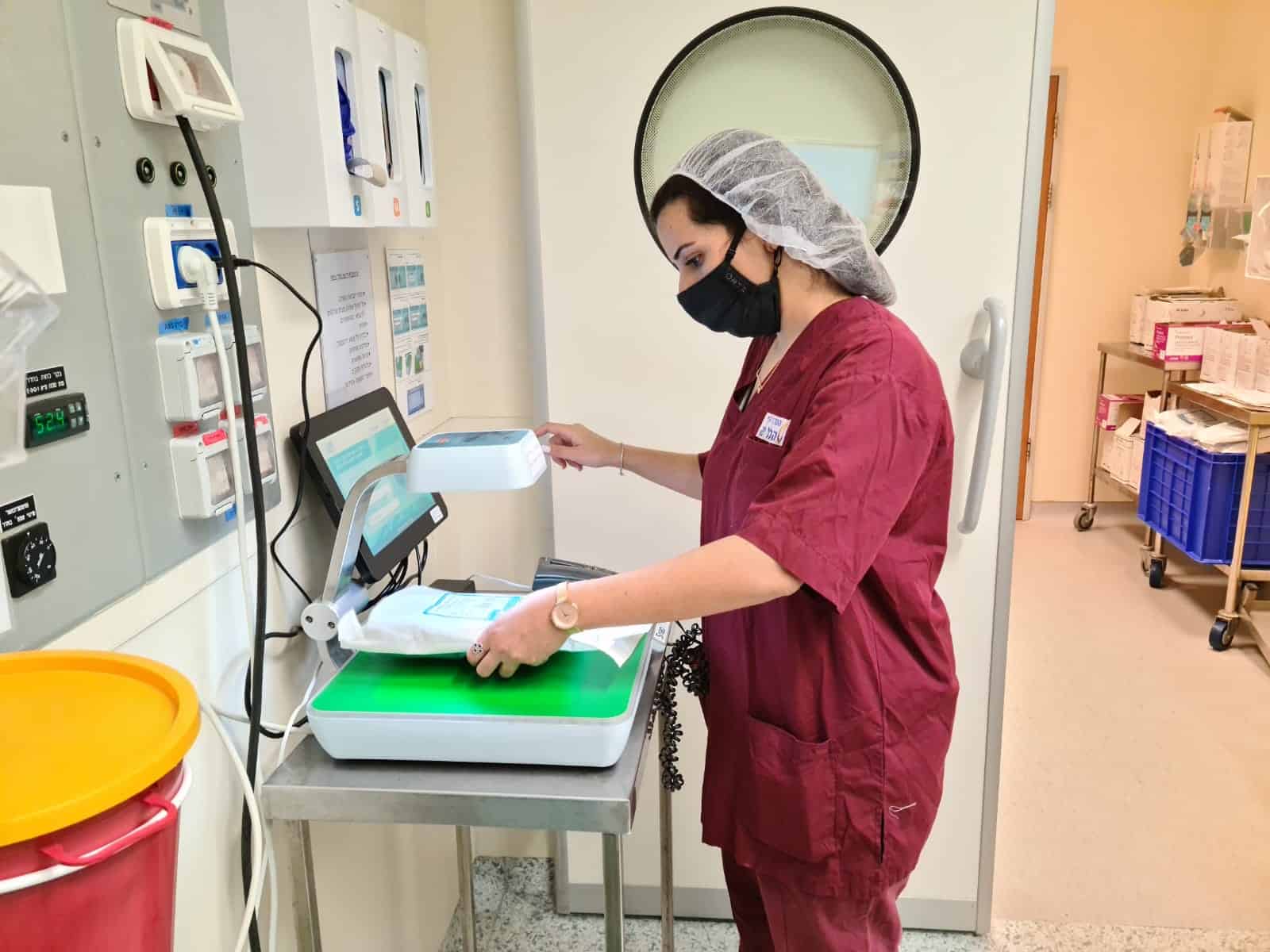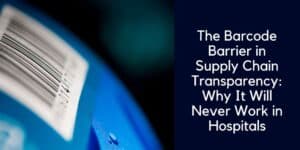In order for Cardiac EP and Cath Lab Managers to optimize the performance of their procedural rooms, they need to be in tight control of their high-value medical inventory.
Cath Labs and EP Labs are exceptionally busy surgical areas, with cardiovascular suites undertaking a complex range of procedures that utilize a diverse and high dollar range of medical devices, tissues and implants.
EP and Cath Labs are known be an expensive area to run but many hospitals are finding ways to reduce expenditure and improve efficiency.
The healthcare sector is re-evaluating itself in the new post-COVID world. It’s looking at how to strengthen management and supply chain systems, while running on leaner budgets. The Cardiovascular Department is a great place to start and finally there is a custom solution that is designed for supply chain management in procedural areas.
Current challenges in the healthcare sector
Healthcare is a competitive marketplace that is going through a period of supply chain disruption and increased costs. Despite the challenges, there is continued pressure on hospitals to improve performance, enhance quality and reduce waste.
But this IS achievable.
If known areas of inefficiency are tackled, there are big wins to be had.
A lot can be achieved by focusing on one key area – inventory management.
Taking the Cath Lab and EP Lab as our example, the management of medical inventory can have a big impact on:
- Patient safety
- Inventory control
- Expiry and recall management
- Level of nurse administration
- Reduced costs
- Improved efficiency
- Increased nurse satisfaction
As EP and Cardiac Cath Labs procedure rooms carry a high volume of high-dollar stock, improving inventory management systems in these areas can result in huge gains.
Let’s begin by taking a look at some of the key areas that many Cardio Departments struggle with.

Cath Lab and EP Lab Challenges
Cath Lab Managers are quite rightly focused on patient welfare and the clinical team. But inefficient workflows, systems and practices clearly have an effect on both quality and performance. So, let’s gain a better understanding of some of the challenges that Cath Labs face.
Inventory Control
Challenges:
Cath Labs and EP Labs carry a wide range of medical inventory so management of this high value stock is crucial and can make a big difference to the bottom line.
It’s just about getting the basics right.
Tracking each individual item throughout its lifespan – that includes knowing:
- All items in stock
- Items that have been removed
- Items that have been used
- Monitoring for expiry and recall
One challenge that Cath Lab nurses face is that you can’t pre-select many items prior to surgery – as you don’t know the exact product size required until the procedure is in progress. This piles pressure on nurses who need to quickly find the right product, in the right size, right now!
Solutions:
Gaining real-time visibility of medical devices and implants in the Cath Lab and EP Lab is central to tackling inventory management inefficiencies. This provides greater control and gives nurses reassurance that the full range of stock is at hand.
Automated inventory management cabinets are a neat solution that not only show inventory visibility, but also prompt accurate re-orders when stocks are low – creating a balanced inventory.
Expiry and Recall Management
Challenges:
Because many Cath Labs and EP Labs carry high volumes of stock, monitoring expiry becomes difficult. Manual systems are time consuming and inaccurate, so there is a real risk of using expired or recalled products.
Expiry and recall both need careful management.
- Expiry: Expired stock shouldn’t really exist, as stocking out of date items is entirely preventable. Monitoring medical inventory ensures that the stock at hand is valid. Expired stock can be avoided by making sure that the soonest to expire items are used first. If there are any expired items being stored then these need to be identified and removed to prevent usage.
- Recall: There are two aspects to recall management:
- Checking items before use – preventing the inadvertent and potentially deadly use of recalled products
- Handling recalls efficiently so that all patients affected are quickly contacted
Solutions:
Automated inventory management systems that use RFID technology are able to report on expiry dates so that stock can be rotated to prevent wastage.
Recalls or expired products can also be flagged on system reports to ensure these items are immediately removed.
In the battle against ‘never events’, end-to-end inventory visibility and system data reports are the ammunition you need to gain control of this vital aspect of inventory management.

Financial Inefficiency
Challenges:
- Inventory: Optimizing EP Lab and Cath Lab Inventory is all about knowledge.
If you know the stock that you have at hand and are aware of your usage, then you can just purchase those items that you need.
Historically, much procurement was carried out based upon intuition. This is clearly an inaccurate way of determining stock requirements and it routinely wasted money and resulted in over stocks and stock outs.
In some cases, the financial wastage is a double catastrophe – with over stocked items expiring on the shelve, not only should they not have been ordered but they ended up never being used!
Inventory waste is expensive and entirely preventable – with the right management tools significant savings can be made.
- Billing: A known weak point in many inventory management systems is the digital recording of usage data at the point of care. Some procedure rooms rely upon manual systems (yes, the ‘sticker on a sheet or in a book’ system still exists!) while others use barcode readers. These are very hit and miss when it comes to capturing full data and often result in long-winded workarounds. Consigned or trunk stock that, is not on hospital systems, is commonly left outside of hospital systems.
Hospitals need to digitally capture full UDI data in order to be compliant with regulations and provide patients with the full protection they deserve. In addition, lack of capture at the point of care means that high-dollar Cath Lab medical devices, implants and consumables are routinely missed off billing.
Solutions:
Inventory management wastage and under-billing can be tackled head on by using a high caliber automated inventory management system. Hospital inventory management software provides end-to-end tracking and reports that inform data-driven decision making, resulting in accurate restocks.
Using data to inform supply chain decisions reduces costs, saves on resources and prevents wastage.
In terms of optimizing billing, again, it’s all about having the right tools at hand.
Long-winded workaround to capture usage and inaccurate billing means that many hospitals are unable to optimize re-imbursements, which is a heavy financial blow.
With many barcode systems not making the grade, it’s lucky that an efficient alternative is at hand that can increase POU charge capture (read on to find out more.)
Nurse Workload
Challenges:
When looking at systems and workflows designed to reduce costs or improve patient care, managers need to assess the impact on nurses.
- Some systems look like they will save time but actually do the opposite. Systems that rely on barcode readers, for example, commonly result in nurses failing to scan items that don’t appear on the Item Master List– leading to an annoying error page which results in them having to battle through time-consuming workarounds. This happens on a regular basis for hospital stock, consignment and trunk stock.
- Perioperative nurses in EP and Cath Labs often discuss the huge amount of time they have to spend hunting down inventory. Items may not be missing – perhaps they were given to another department or were removed from stock but not used and never returned. Finding the exact item required is rarely straight forward.
As cardiovascular suite inventory is managed by nurses and not materials managers, perioperative staff already have a whole range of additional duties. With patients to care for and clinical teams to support, nurses find supply chain admin a burden.
In today’s post COVID world, healthcare institutions are doing everything they can to retain nurses, so ensuring minimal admin and high levels of job satisfaction are important.
Solutions:
Choosing the right tools is the key to reducing nurse involvement in the supply chain.
EP and Cath Lab inventory management software that seamlessly integrates into existing workflows, doesn’t require duplicate inputting and actually does what it’s designed to do – for every item of stock – DOES exist!
Lack of Data
Challenges:
We’ve mentioned the value of data throughout this article.
- Data capture
- Data reports
- Data insights
- Data-driven decisions
Simply put, without data organizations are working blind.
They are relying upon ‘best-guesses’ and intuition in place of cold, hard facts.
Without data hospitals and ASCs are prone to the following:
- Stock outs
- Stock surpluses
- Difficulty managing expiry
- High wastage costs
- Compromized patient safety
Inventory visibility and data are the crucial elements that all hospitals need in order to gain control over their medical inventory.
Solutions:
Automatic inventory management systems display inventory metrics, generate daily reports and look at historical patterns to provide data insights.
All of this data provides extremely powerful information that can help organizations with budget planning, as well as identifying and tackling problems.
One common issue in EP and Cath Labs, as well as in other hospital areas, is the broad range of items on individual physician preference cards. Different doctors often favor different suppliers and different products and this prevents economies of scale in the supply chain.
Data can help hospitals discuss these issues with physicians in a non-confrontational manner – identifying price variances and encouraging alignment of suppliers for same-type products, where the variance does not add value.
It has been proven that monitoring usage and analyzing data can reduce variability and add efficiency to hospital supply chains.
So, let’s take a look at two EP and Cath Lab inventory management systems that have made a real difference in hospital EP and Cardiac Cath Labs procedure rooms – achieving efficiencies, reducing costs and taking the strain off of busy nurses.
Here is IDENTI’s complete solution for smarter EP and Cath Lab inventory management.
There is a dual approach to data collection:
STOCK: TotalSense Cabinet – for real-time tracking and visibility of medical inventory
CONSUMPTION: Snap &Go – for point of care recording of item UDI and charges, as well as expiry and recall alerts.
CATH LAB DATA COLLECTION SOLUTION – AUTOMATED STOCK TRACKING:
Total Sense: The smart medical device, tissue and implant cabinet

What is it?
Total Sense is a smart RFID cabinet that provides real-time stock visibility and tracking of implants, tissue and medical devices. It’s supported by an AI-powered management system that provides reports, metrics and data insights that will support supply chain decision-making.
What makes it special?
It does exactly what it’s supposed to do:
- Real-time stock visibility
- Expiry and recall management
- 360˚ joint supply chain visibility for vendors and healthcare organizations
- POC usage can be tracked with an RFID desktop reader or Snap & Go (see below)
It’s so versatile!
- Our UHF RFID Cabinet holds a large volume of products which can be stored at any angle – with full capture of UDI and expiry data.
- It can be set up with different configurations – shelves, drawers, hanging space – to suit different shapes and sizes of products.
What is the impact?
Let’s take a look at the impact that Total Sense had on Sheba Hospital, a large 1,700-bed hospital in Israel, where Total Sense Cabinets were installed in their Cath Lab.
- $2-3M saved by reducing excess inventory
- Charge capture rate has increased by 87% for managed items
- Zero wastage due to expiry
- Agreement on consumption lead to improved vendor relationships
- Joint visibility enabled a shift to full consignment – pay-per-use stock
- Reduction in manual processes and staff workload
CATH LAB DATA COLLECTION SOLUTION – AUTOMATED CONSUMPTION TRACKING:
Snap & Go: 100% item and charge capture at the point of care

What is it?
Snap & Go is a ground breaking point of use data capture tool using image-recognition technology at the point of care. In just 3 seconds full UDI and charges are electronically captured and recorded on your EHR.
What makes it special?
- It uses image-recognition – no more item master miseries – it digitalizes ALL items including those that don’t match your Item Master, consignment and trunk stock!
- Full data capture in 3 seconds. (Yes really!)
- Real-time, pre-consumption expiry and recall alerts – giving you a final safety net to prevent ‘never-events’.
What is the impact?
Let’s review the impact that Snap & Go had on Hillel Medical Center, who installed Snap & Go in their operating and procedural rooms.
Here’s what they had to say:
- “Everything is saved in the patient’s record. There wasn’t a connection between the patient’s record and the implant (before) and this system enables it simply and easily.”
- “It’s revolutionary… the operating room was a real “black hole.” We stocked them with supplies and didn’t know which items were used and which weren’t.”
- “It’s a very user-friendly system that easily allows us to reach almost 100% reporting.”
- “It’s not dependent on our ERP system. If a SKU doesn’t match our master list… it doesn’t stop the flow of data. It knows how to connect the implant manufacturer’s catalog number with our internal SKU.”
- “We have 10 operating rooms. We added the devices to all rooms on the same day, at the same time – they all began reporting immediately.”

“We’ve been working with IDENTI for 4 years…
We introduced several devices into our operating rooms that effectively
improved our inventory management from end to end. .
Everything is reported automatically to our suppliers so they replenish on time.
We’ve reduced time and effort to zero – REALLY ZERO.”

Introducing an automated Cath Lab inventory management system based on real-time tracking and reporting and that includes robust point of care usage capture is the future of Cath Lab inventory management
The Bigger Picture
There is ongoing pressure for hospitals to reduce spending, streamline inventory, improve supply chain workflows and minimize waste, in order to remain competitive.
Using the right technology, it is possible to drive through hospital supply chain efficiencies, streamlined workflows and financial improvements while at the same time optimizing clinical and operational excellence.
Learn more about Total Sense.
See how Snap&Go works in practice.
Contact IDENTI Medical for a discussion about improving the efficiency of your EP and Cath Lab.






